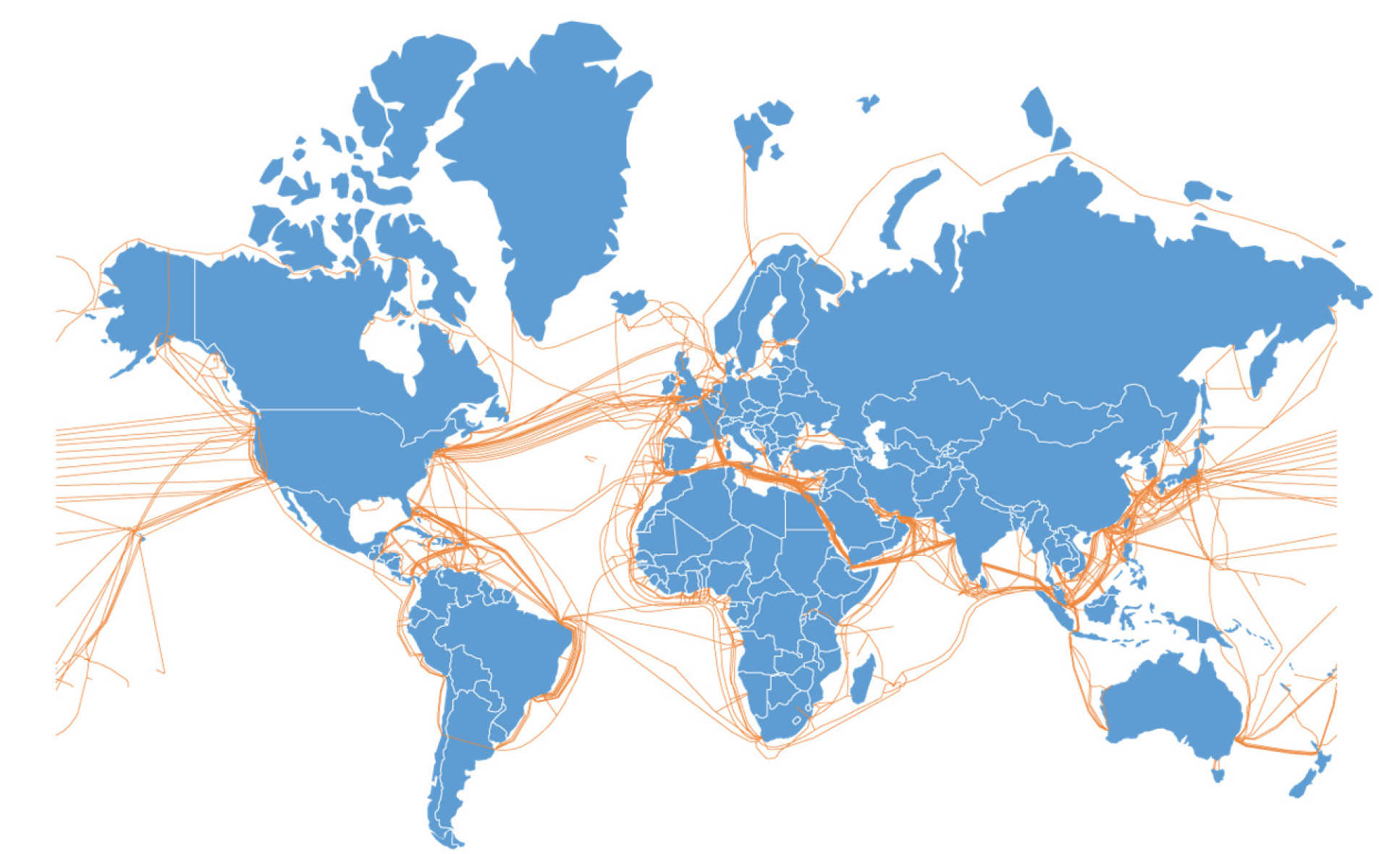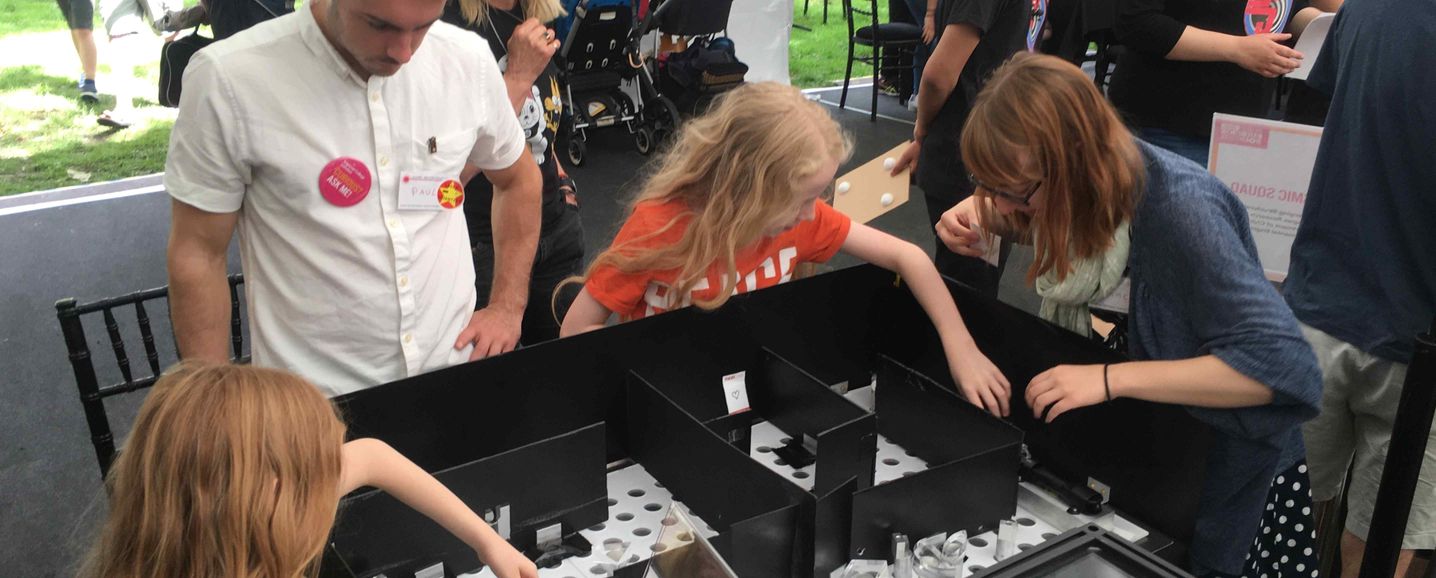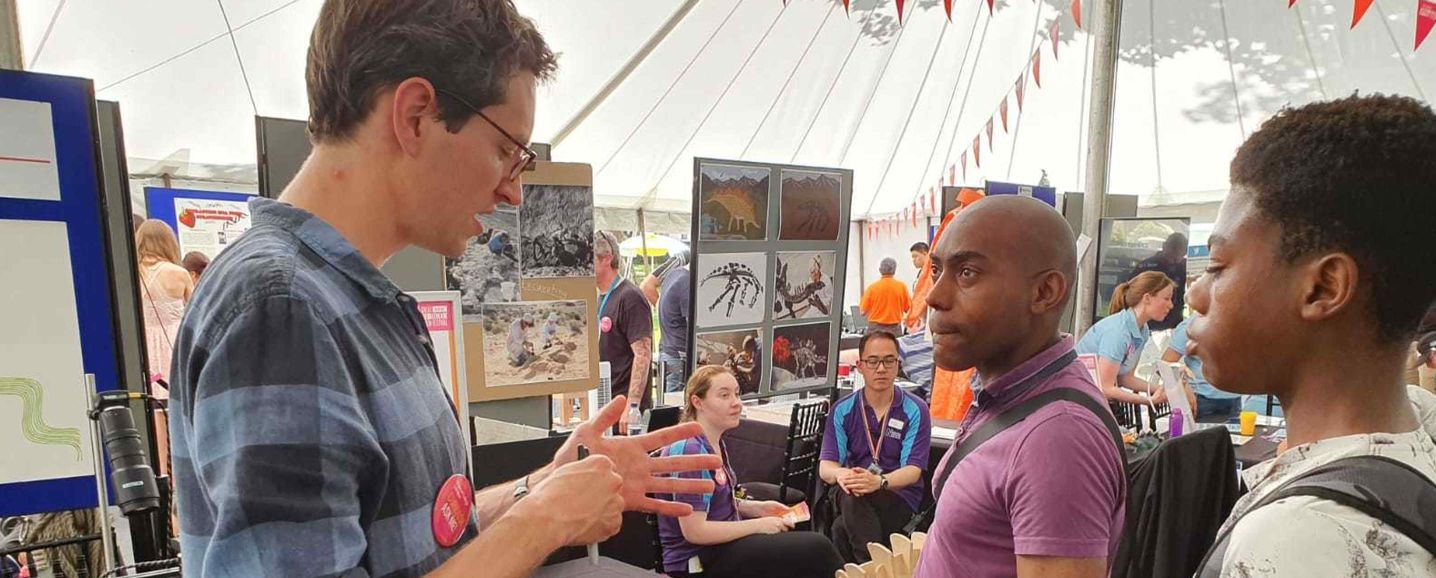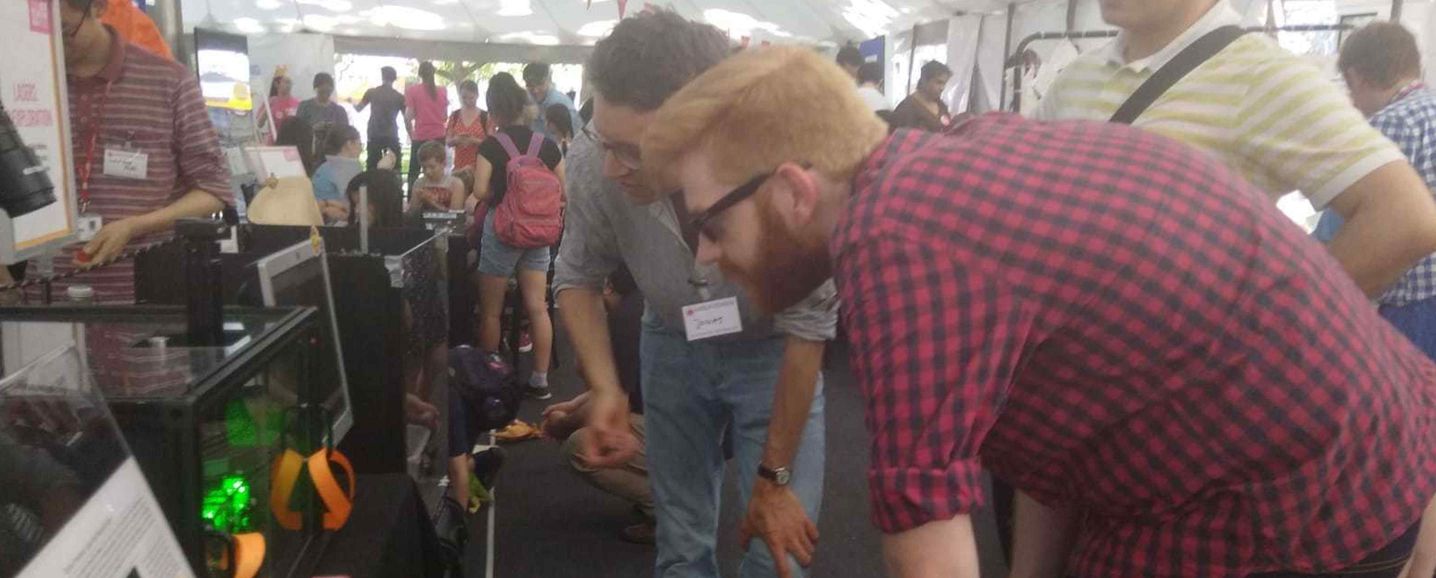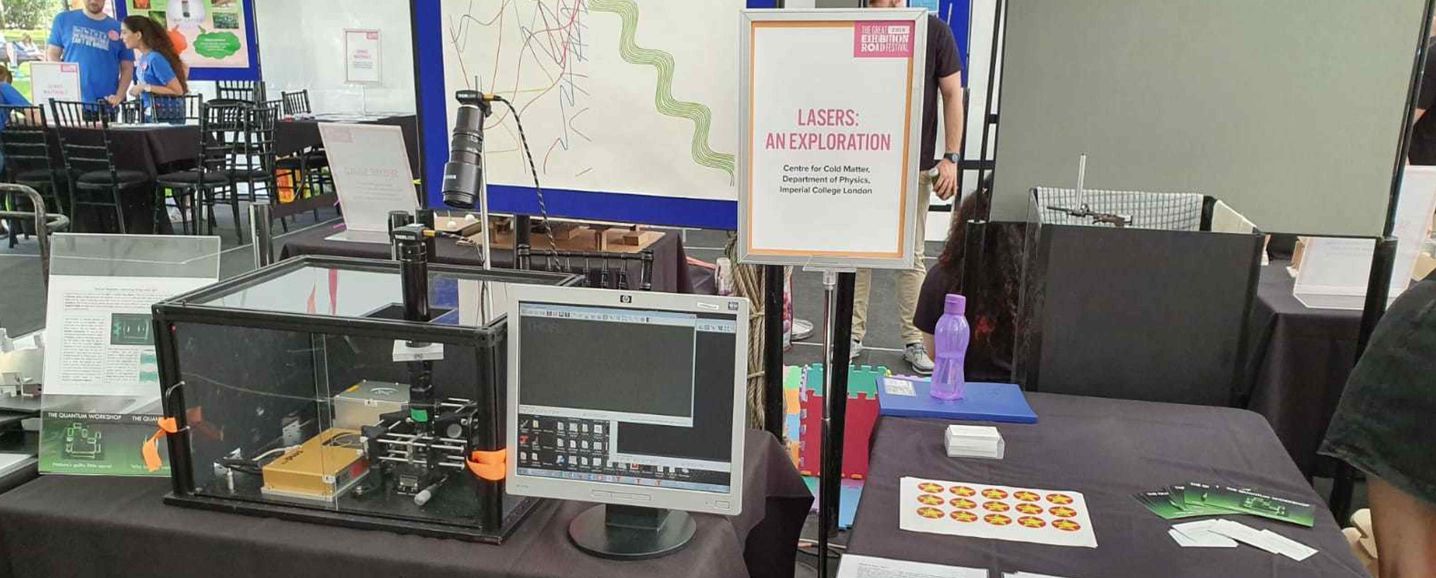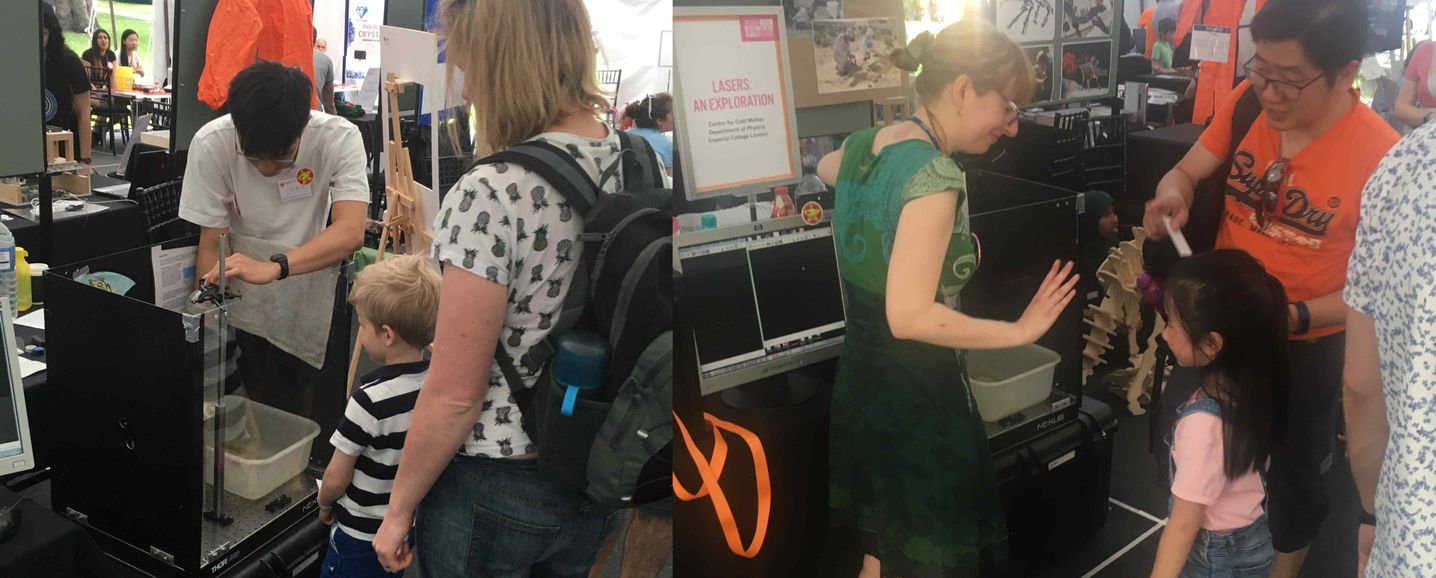The Great Exhibition Road Festival 2019
We were at The Great Exhibition Road Festival! Did you see us?
Our specialty is the science of lasers and cold matter. At the festival, we demonstrated some of the physics that we make use of every day in our laboratory. Outshining (literally) our other demonstrations, was our tweezer trap. This device uses a powerful green laser to trap and hold on to small objects. Next to the tweezer trap was our water fountain. Here we revealed how water can be used to change the path of light by confining it inside the stream of water and allowing it to be guided around corners. Last, but not least, was our interactive challenge. Using mirrors and lenses, we asked you to direct and shape laser light so that it could traverse a maze! If you would like to learn more about the physics of our demonstrations, check out the sections below.
Physics of our demonstrations
A beam of light is like a bundle of rays. If the rays are separating as they travel, the light is diverging, and if they are coming together the light is converging. To change the divergence, you need a lens. A lens is a piece of transparent material, often glass, with curved surfaces. When a light ray meets the surface, it gets bent, and because the surface is curved, different rays are bent by different amounts.
Lenses can be used in pairs, as shown in the picture below, to change the size of the laser beam. Other uses include microscopes, binoculars, telescopes, cameras, and glasses. Your eye contains a lens made by nature!

The word LASER stands for “Light Amplification by Stimulated Emission of Radiation”. The light from a laser may be visible, infra-red, or ultra-violet.
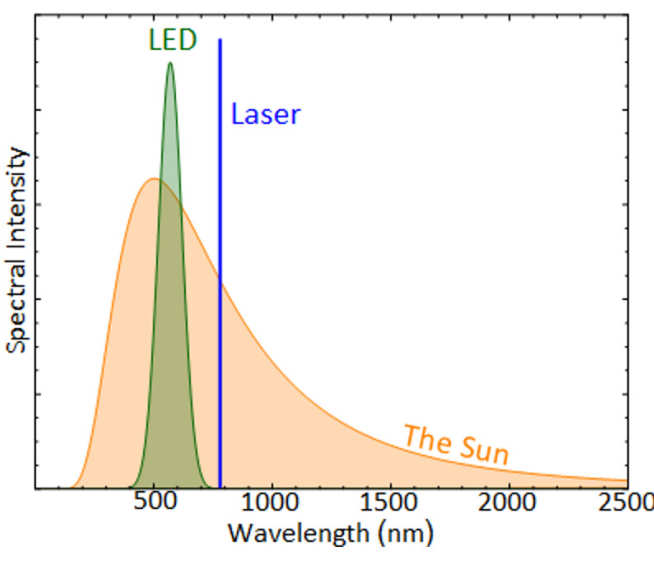
Laser light is different from other sources of light (e.g. stars, fire, filament lamps, or LEDs). The first key difference is that it is monochromatic, meaning it contains a single wavelength. The wavelength determines the precise colour of the laser. The graph on the right compares the spectrum of wavelengths of light from the sun, a typical LED and a laser. The laser appears as a narrow line on the graph, because it is a single wavelength of light.
The second key difference about laser light is that it is coherent. This means that two beams of light from the same laser can interfere together, and make a diffraction pattern. This cannot be done with light from a light bulb, because it contains many wavelengths (colours) combined in a “noisy” way. In some ways the light from a laser is like a single musical note, whereas the light from a bulb is like white noise from a broken speaker. Laser light has these properties because of the way it is produced.
To make laser light, we need to do two things:
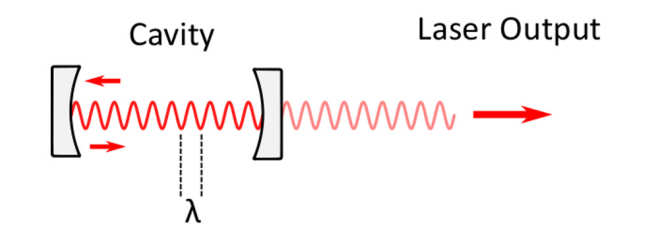
- Make a cavity. This is normally made by two mirrors whose separation determines the precise wavelength of the laser light. The light bounces back and forth between the mirrors many times.
- Make a gain medium. This is something which amplifies the light. To do this, we need to put more than half of the atoms in the gain medium into an excited energy level. When this happens, any light at the laser wavelength stimulates atoms to move to the lower energy level, emitting more light as they do. The light is amplified in a way that makes it very coherent.
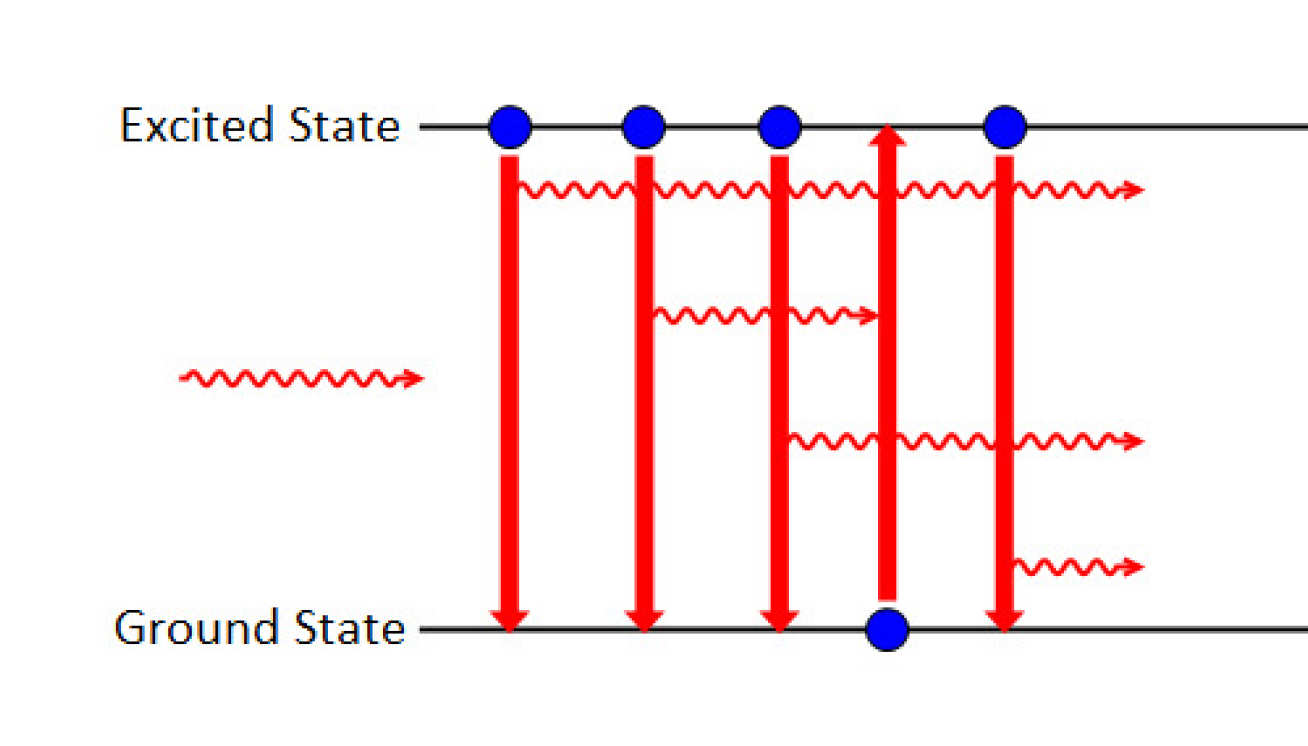
Light travels at different speeds in different materials. The ratio of the speed of light in vacuum (where there is nothing) to the speed of light in a material is the refractive index of the material. For example, this is 1.0003 for air and 1.333 for water.
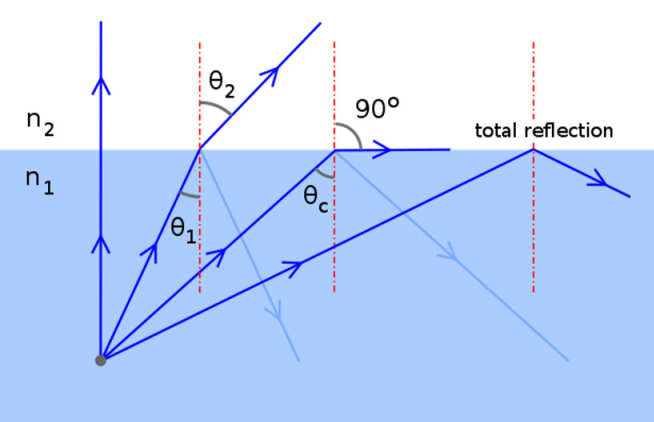
When light encounters a boundary between two different materials, it is generally both reflected and refracted. If the first material has a higher refractive index than the second, and if the light is incident at a steep enough angle, the light can be completely reflected. This is total internal reflection (see figure on the right).
In our demonstration, we direct laser light down a stream of water. The light is reflected when it hits the boundary between water and air, so it bounces back and forth, staying within the stream of water (see figure below).
The same principle is used in optical fibres. These are glass or plastic fibres that have a diameter about the width of a human hair, and they are able to transport light across huge distances without suffering much loss. In this way, light is used to communicate information and connect the world together, giving us the internet for example. The worldwide fibre optic network is shown in the bottom figure.

